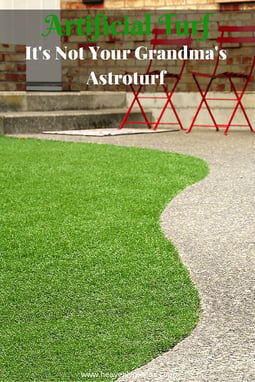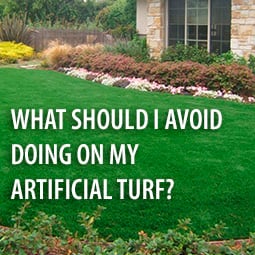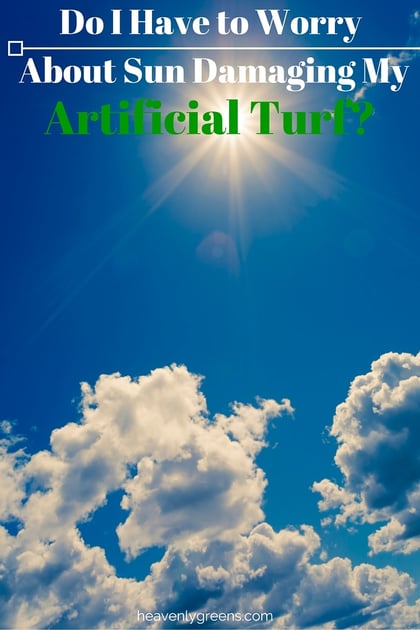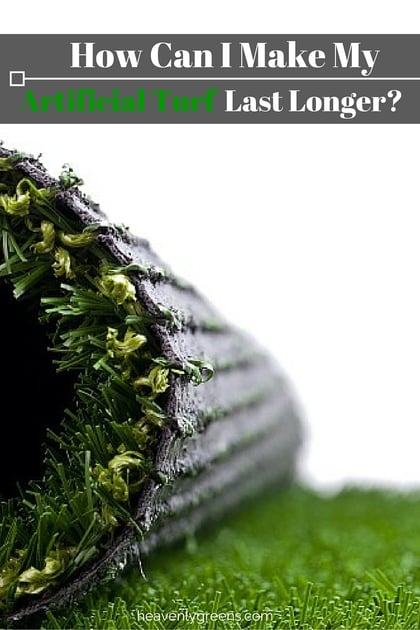 Artificial turf was first used on indoor playing fields. The National Football League was one of the first to use the turf in professional sports, in an attempt to prevent game delays to do to weather. By playing the game inside a stadium, it could be played rain, shine or heavy snow. Over the years, artificial has increased in popularity. Improvements have been made that make it popular with homeowners who have children or want to install recreational areas, like putting greens.
Artificial turf was first used on indoor playing fields. The National Football League was one of the first to use the turf in professional sports, in an attempt to prevent game delays to do to weather. By playing the game inside a stadium, it could be played rain, shine or heavy snow. Over the years, artificial has increased in popularity. Improvements have been made that make it popular with homeowners who have children or want to install recreational areas, like putting greens.
Better Materials
Artificial turf manufactured in the 1960's was extremely hard and stiff. Many athletes didn't like playing on artificial turf because their cleats would stick in the surface and cause them to be injured through falls, hyper extensions or missteps. As newer materials were incorporated into the construction of the mesh fabric and the rubber padding was added, several things began to occur. Not only were the blades softer, but the turf had more cushion and offered more shock absorption. Another improvement came in the form of better wear and tear. The turf did not break down as easily as in the past and was more resistant to tears, gouging or staining.
Softer Infill
One of the biggest improvements over the first versions of AstroTurf has to do with the materials used as infill. Crumb rubber, pea gravel, sand or a combination of any of the three are commonly used as infill. All provide a soft cushion, even though certain types of sand and gravel have a chance of packing together that can make the surface somewhat harder over time. While there was some debate over the use of crumb rubber in the past, it has proven to be quite safe and a reliable resource to draw from. Made from recycled tires, crumb rubber is not as dirty or hard as many people first believed. It also keeps thousands of tires out of landfills and promotes the recycling industry.
Infill is used primarily to offer a slight cushion to the ground much like what is felt in a natural grass lawn. You may not feel much of a cushion as you walk on the ground, but you will notice a dramatic difference when you start to run over it or accidentally fall onto it. The shock absorption effect helps to reduce injuries and allows balls to roll more smoothly across the surface. This is part of the reason artificial turf is so popular when it comes to backyard putting greens and recreational areas.
Softer Blades
Materials used in the making of the polyurethane fabric are also more resilient, pliable and flexible. The blades of grass are much softer and do not mat down as easily as their predecessors. The same is true for the mesh that is used to create the foundation of the artificial turf. It is extremely resistant to fraying, tearing, piercing or gouging and will hold up even under the toughest circumstances. Because the blades are made with stronger, lighter weight materials, they resist being trampled down or matted from heavy volumes of foot traffic.
Since it was first used, artificial turf has offered businesses, athletic organizations and homeowners an alternative option to natural grass. The reduced need for maintenance was the first bonus. Added beauty and an increase in a home's value were also prime benefits. With the passing of the years, the materials and construction of artificial turf has dramatically improved making it a much better bargain than ever before. No more stiff, unrelenting turf. Instead, homeowners can look forward to a soft, plush lawn that feels amazingly like natural grass, without all of the additional care.











